Weekly round-up: 08 - 14 October 2014
Ah... it’s been a while. Settling back into the RBA Rarity Round-Up saddle this week, I was ready for a deluge of Sibes and a smattering of Yanks – this was, after all, traditionally one of the best weeks of the year for monster rarities. And, for the most part, the birds didn’t disappoint – though perhaps next week is when Scilly finally kicks into gear and lands the monster American passerine we’re all waiting for. Or will it make landfall further north?
Many of last week’s headlining rarities made it into another week, and were augmented by some new arrivals. We’re going to have to make some room for those newcomers in the headlines, while doffing our caps respectfully to last week’s outstanding performers…
The weather this week suggested we were in for some easterly action, with promising winds focused initially on Shetland and, latterly, on most of the east coast. As we head into the new week, all eyes are firmly fixed on the Atlantic, and some good-looking systems tracking our way.
For now though, time to settle down with a cuppa and look back on the week that was. Just don’t mention the >strong>Yellow-browed Warblers. Just don’t.
Shetland – truly the autumn birding destination that just keeps on giving these days. A Bonelli’s Warbler sp found in Scalloway on 10th firmed up after a little initial confusion into an Eastern Bonelli’s Warbler on 11th once it had been heard calling. That would make it potentially Britain’s seventh record of the species, and Shetland’s second since the first confirmed one in 1998. Ah. If only it were that simple...
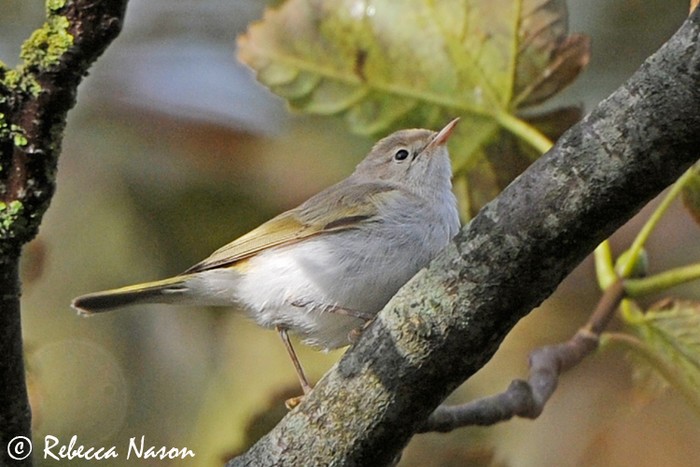
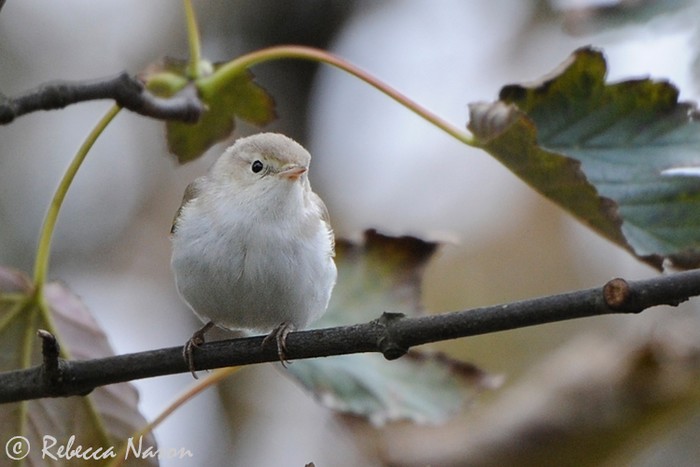
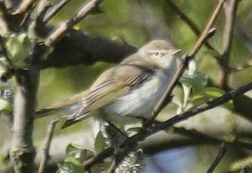
Eastern Bonelli's Warbler Newbiggin
N'berland May 2014 © Stefan McElwee
BOU/IRBC Status: A
RBA status: Extremely rare vagrant
Accepted British records: 5
2009: May 01 - Dorset: Southwell, Portland
2004: Apr 26 - Devon: Lundy
1998 Aug 27 to Sept 5 - Shetland: Sumburgh and Grutness
1995 Sept 20 to 29 - N'berland: Whitley Bay
1987 Sep 30 to Oct 10 - Isles of Scilly: St.Mary's
Accepted Irish records: 0
Those turning up to see (and, most importantly, hear) the bird on subsequent days were treated to reasonable views of this attractive bird as it moved like quicksilver through Scalloway’s surprisingly wooded environs, but it remained stubbornly, obstinately silent. Raising the lid of a whole contentious listing can of worms as to whether or not one should tick something that one can’t personally be sure was a particular species. Your own correspondent is still staring at a big blank space in the list next to Eastern Bonelli’s Warbler, but perhaps I’m old-fashioned like that.
Matters were at times rendered more confusing still with well-equipped birders playing both Eastern and Western calls to see if either would elicit a response from the bird. Which, itself, seemed largely unmoved by either playback; but posed the risk that listening birders would hear a recording and assume it was the bird itself. Not to mention the risk of poorly-heard nearby other species – there were House Sparrows and Chaffinches both giving faint chup calls. It was all somewhat trying in the field.
Nothing should detract though from a thoroughly good-looking bird – the usual winning Bonelli’s combination of silky-white underparts and vivid wings’n’tail. Was it too bright for an Eastern? There were mutterings in the crowd, but perhaps we’re all too conditioned that these birds should be pale and dull. The call, it seems, is all – and this bird simply wasn’t going to give itself up easily and remained silent thereafter until its disappearance on 14th. Despite the undoubted confidence of those who have heard it, without a supporting sound-recording it may be interesting to see how this bird fares with BBRC...
Elsewhere in Shetland, the stunning male Siberian Rubythroat continued to delight in Levenwick on 8th, but wasn’t seen thereafter. It’s a particularly pleasing development to see the species is doing a Red-flanked Bluetail and becoming gradually more regular, even (whisper it) expected... Here’s to plenty more of these gorgeous jewel-throated skulkers in coming years.
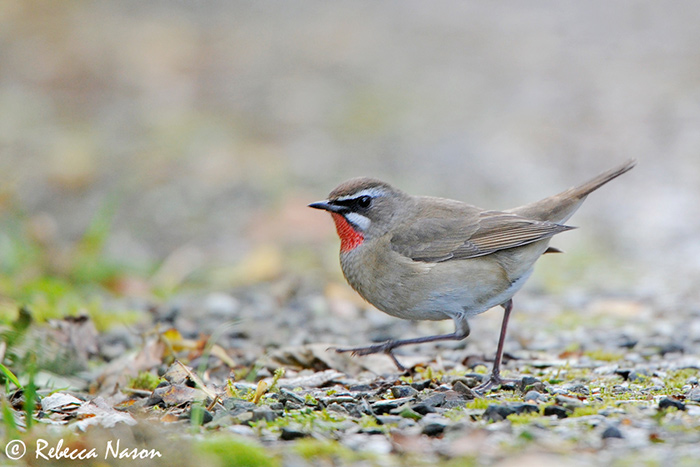
Remaining firmly on the subject of last week’s colourful and pleasing birds that crept into the new recording period, Barra’s cracking Scarlet Tanager remained available until 9th. And here I must respectfully disagree with last week’s Round-Up - Scarlet Tanager is a fine, good-looking beasty in anyone’s books, and stands comparison with the best in any autumnal avian beauty pageant. Particularly when seasoned with the delicious savour of the tanager in question being nationally rare and a first for Scotland. And as the next bird in the pecking order goes to show, Barra was by no means finished for the autumn...
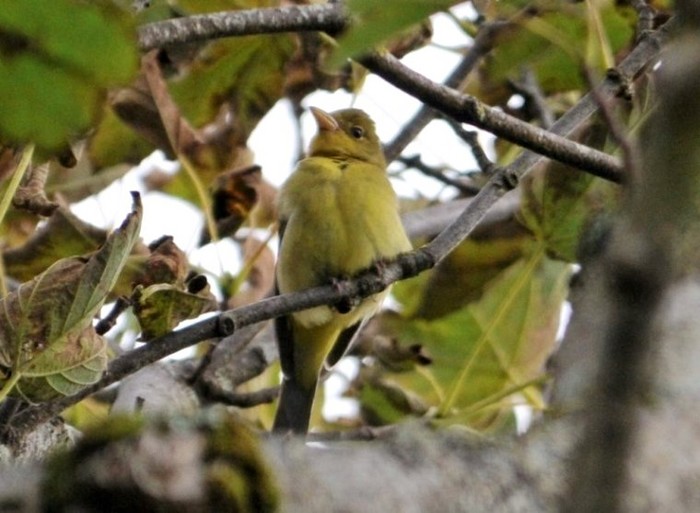
Yes, you read that right – that’s a Cetti’s Warbler standing proudly in the company of the likes of Scarlet Tanager and Siberian Rubythroat this week. One was found on Barra on 12th, and to put that into context, this was only Scotland’s second ever record, and the first one with a pulse... thereby making it, technically, only slightly commoner than the aforementioned tanager and considerably commoner than said rubythroat. Wow indeed.
Scotland’s first was a decidedly bizarre record of a French-ringed individual found dead beneath a window of the Scottish Natural Heritage building in Leith on 4th October 1993. Despite the British Cetti’s Warbler population making some northerly headway in the past couple of decades, the species remains markedlyy scarce in the north of England, so quite where this particular individual has come from is a matter of conjecture – could it be a dispersing British bird, or could it have come in from the Continent? Whatever the origin, it remains a monster Scottish bird. What next for Barra this autumn?
Sticking now with both unlikely headlining species and ones that have a colourful past history, it’s onto the Great Snipe in the dead of night in Powys on 9th. Any record of Great Snipe in Wales would be noteworthy enough in and of itself. That this was a first latterday record for Powys is more noteworthy yet. But that this one was in-the-hand... ah, now that’s particularly unusual.
My BirdNotes in this week's @dailypostwales feat. a surprise Great Snipe HT @DoNorthWales http://t.co/Gz6yVJu7pA pic.twitter.com/UfbaCsk1G3
— Julian Hughes (@Penrhynbirder) October 14, 2014Great Snipe, Llandrindod Wells, Powys as featured on Julian Hughes's Twitter feed
I remember as a kid avidly reading old bird books and journals picked up for a pittance in secondhand book shops. And in those old publications there were reports aplenty of Great Snipes being shot in game shoots all across the country during the 19th and early 20th century. It seemed so implausible – everyone knew that Great Snipe only occurred in the northern isles and, if you were lucky, on the east coast. Except, of course, when one appears in a ringer’s spotlight in the dead of night in mid Wales. Just goes to show, rare birds can and probably do turn up pretty much anywhere – you just need your path to cross theirs.
(A small footnote – there had been three previous records of Great Snipe in Powys, all dating to around 1876. They were, needless to say, all unceremoniously shot).
In stark contrast to the big chunky Welsh Gallinago, stumbling across an Audouin’s Gull at Kent’s Dungeness on 12th must count as almost to be expected. Host to Britain’s first and third accepted records, the site has real form where the species is concerned, and this individual takes the British tally to a magnificent seven in the space of 11 years.
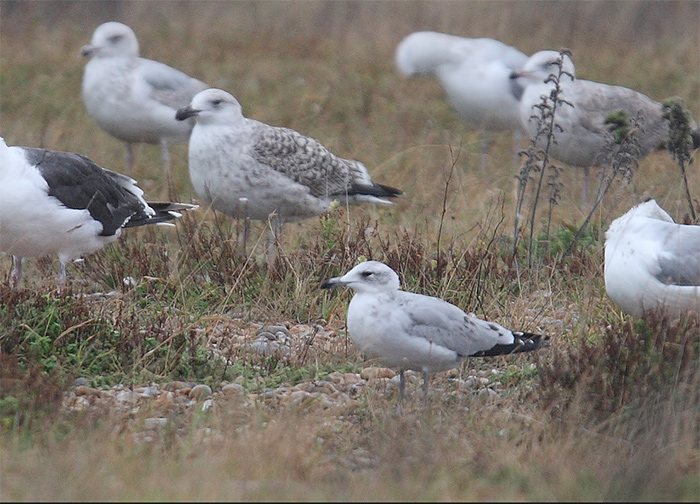
Their recent breeding success on the Continent is a matter of record, and they’re averaging a shade over one every two years now as far as British records are concerned. Most of those records have shown a late spring or early summer bias, and this is the latest record by some margin, opening up a wider than hitherto window of when one of these smart gulls might reasonably be expected. There will be any number of southern and eastern coastal counties feeling that it’s only a matter of time before one pitches up for them. Cley’s eagle-eyed regulars will be particularly en garde...
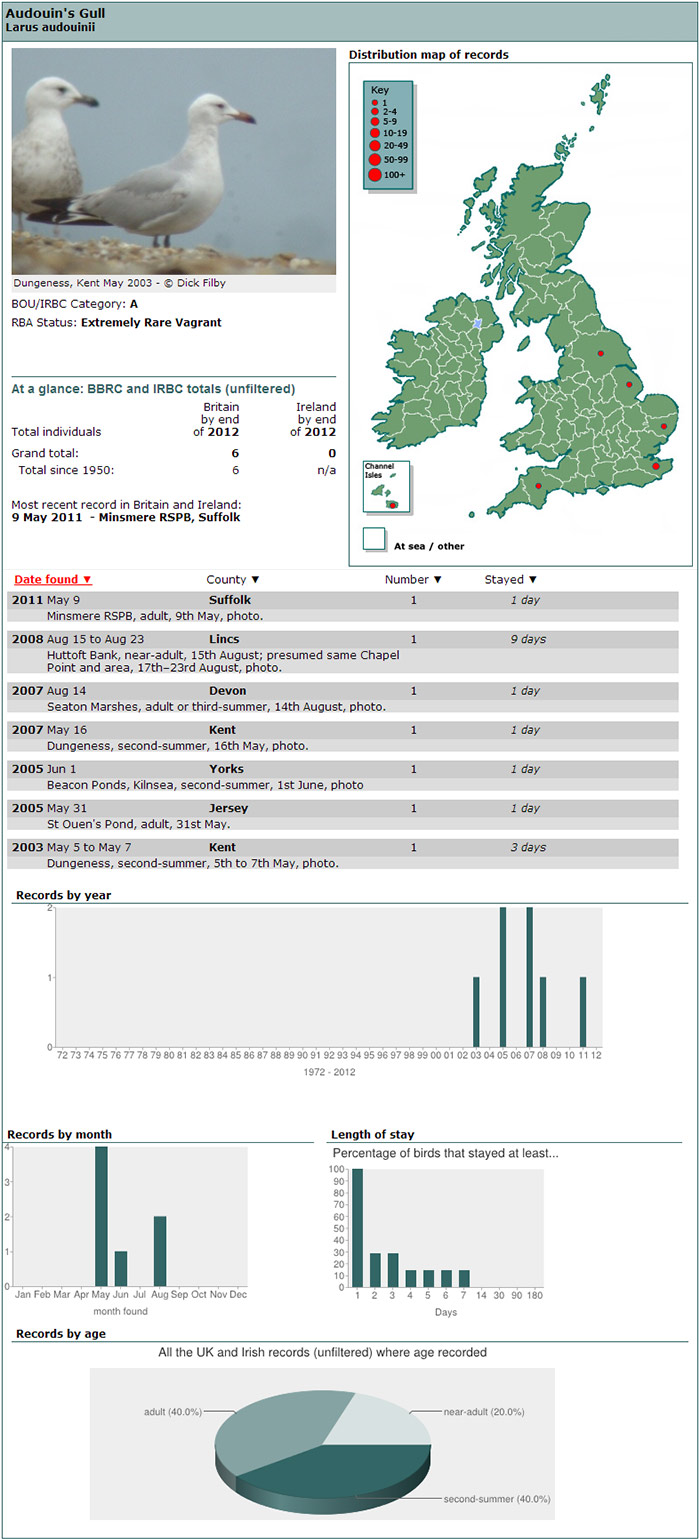
Catching up with a Brunnich’s Guillemot anywhere in the UK has, until the recent Dorset bird, been decidedly challenging for British birders, particularly those south of the Scottish border. That said, for those prepared to make the trek north for the likes of the lingering bird in Lerwick in 2005 or the confiding bird in Weymouth harbour last year, there’s a big firm tick inked in next to the species on many a list.
Far more challenging though is the task facing any stalwart seawatcher who is blessed with one of these smart auks unexpectedly barrelling past them. Making the call is one thing – getting that successfully identified auk accepted by the BBRC is quite another. Just ask your regular Norfolk-based correspondent in these august columns…
So the very best of British to those fortunate observers who picked up a Brunnich’s flying north past East Yorkshire’s Flamborough Head on the morning of 13th. You know what you saw, and that perhaps is the main thing when all’s said and done.
I don’t know. Somehow I thought my first October Rarity Round-Up would be all about the passerines, but here we are, segueing seamlessly from a Kentish Audouin’s Gull and a Yorkshire Brunnich’s into a trio of at-sea sightings of the sorts of quality seabirds I’d have expected to see cropping up a little earlier in the autumn. Not that anyone’s complaining, of course, least of all those fortunate enough to be at sea for them.
Perhaps I shouldn’t be surprised though - after the year’s second and third records of Barolo Shearwater were logged last week off Anglesey and Co.Clare, another one some 12 nautical miles WSW of Cornwall’s Land’s End on 8th wasn’t wholly unexpected after all. While numerically rarer this autumn than either Fea’s or Wilson’s Petrels, special mention must be made of both the latter this week with both species being recorded (11 and 17 nautical miles respectively) SSE of Co.Galway’s Galley Head on 10th. Throw in some Balearic Shearwaters and a Pomarine Skua and you’ve got a none too shabby pelagic effort no matter what the time of year.
Eight Great Shearwaters were logged this week, two off Porthgwarra (Cornwall) on 8th, and the remainder from Co.Cork’s formidable waters – a single at sea SW of the Kinsale gas fields on 11th, and five more east of the gas fields on 12th.
Good numbers of Balearic Shearwater were noted during the past week, with the larger counts weighted in the opening days. Some 1,200 birds were noted in all, with particularly sizeable counts coming from Cornwall where Porthgwarra alone accounted for 258 on 8th and 324 on 9th. As might be expected, there was a distinctly westerly bias to the spread of records, and Irish waters also accounted for good numbers, although nothing approaching the Cornish tallies – the maximum count being 30 off Old Head of Kinsale (Co.Cork) on 8th.
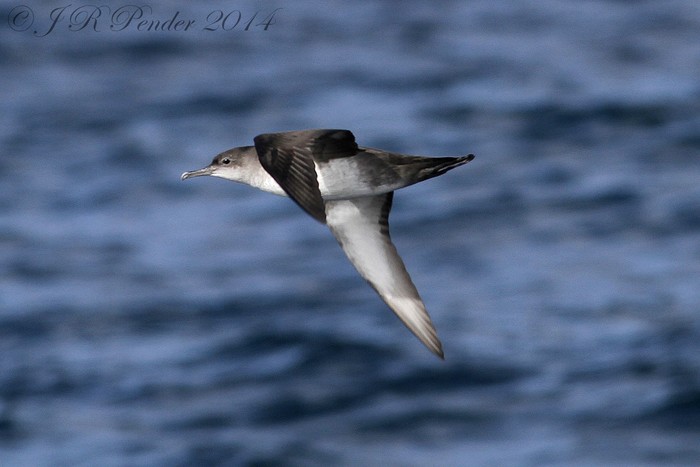
A strong showing from Pomarine Skuas this week with some 245 individuals logged all around the British and Irish coast. While many records involved single figures of birds, there were some more notable tallies posted, particularly at the back end of the week: 11 passed Kilcummin Head (Co.Mayo) on 9th; whilst on 13th 20 passed Flamborough Head and 28 passed Spurn (East Yorkshire), 15 passed Essex’s Canvey Island, 15 were off the River Nene mouth and 20 passed Sandibanks (Lincolnshire), and 20 were noted off Whitburn Coastal Park (Co.Durham).
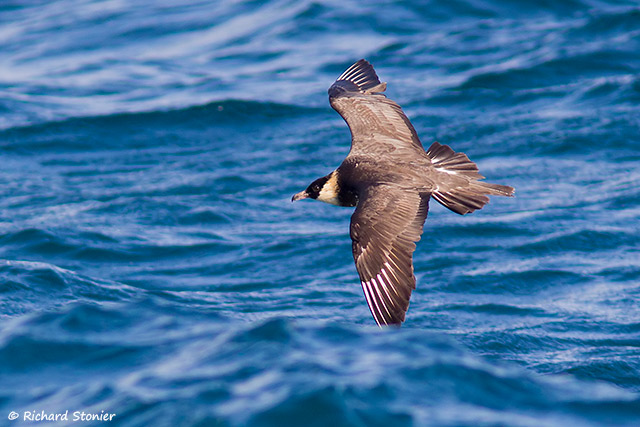
Numbers of Long-tailed Skuas were predictably not in the same ball park, but nonetheless collectively ascended into double figures with 19 recorded through the week. Singles were seen off Chesil Cove (Dorset) on 8th; Kilcummin Head (Co.Mayo) and Donna Nook (Lincolnshire) on 9th; and on 13th, off Frinton-on-sea (Essex), Hartlepool Headland (Cleveland), Huttoft Bank (Lincolnshire), Spurn (East Yorkshire) and Old Nab (North Yorkshire). Duos were noted past Berry Head (Devon) on 8th, and Filey (North Yorkshire), Whitburn Coastal Park (Co.Durham) and Gibralter Point (Lincolnshire) on 13th. Three birds were seen passing Hound Point (Lothian) on 13th, and one moved through Paxton Pits NR (Cambridgeshire) on 14th. One was at Graffham Water (Cambridgeshire) on 14th, and duos passed St.Mary’s Island (Northumberland), Old Nab (North Yorkshire) and Hornsea (East Yorkshire) that day also, with three passing Co.Durham’s Whitburn Coastal Park.
As the week drew to a blustery conclusion, there was a certain inevitability about the sudden (albeit modest) spike in sightings of Leach’s Petrels and Little Auks (and, of course, Sabine’s Gulls and Grey Phalaropes, but more of them in due course).
The 13th kicked off proceedings where Leach’s Petrels were concerned with two birds noted off Dungeness (Kent), and singles noted from Aldeburgh and Pakefield (Suffolk), Horsey (Norfolk), Sandilands (Lincolnshire), Hartlepool Headland (Cleveland) and Spurn (East Yorkshire). Further birds were logged on 14th from Great Cowden (East Yorkshire) and Hartlepool Headland (Cleveland).
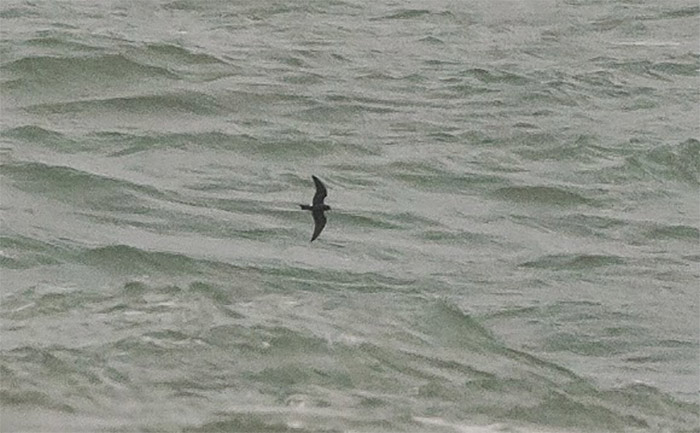
Little Auk numbers were similarly modest on 13th: three birds passed Cley (Norfolk), a single was seen from Whitburn Coastal Park (Co.Durham), two passed Long Nab and three were off Filey (North Yorkshire), and seven were seen passing East Yorkshire’s redoubtable Flamborough Head. On 14th, twelve passed Flamborough and two passed Barmston (East Yorkshire); three went by Scarborough and three passed Filey (North Yorkshire); one passed the Farnes and three went by Newbiggin-by-the-Sea (Northumberland); and three passed Durham’s Whitburn Coastal Park.
The juvenile Night Heron kicked off proceedings in Herons, Egrets & Allies corner this week, being still present at Penwortham (Lancashire) until 9th. The Cattle Egret at Dungeness (Kent) was also noted until 14th, whilst the individual at Burton Mere Wetlands (Cheshire) was logged again on 11th and was still present on 13th. Meanwhile, down in Devon a third bird was seen at Braunton Marsh on 8th-12th.

I’d forgotten just how busy Great White Egrets are getting around these parts at this time of year (though not in the Spoonbill flock ballpark…) – around 50 birds were reported this week from 19 counties. Many but not all of these involved single birds - the peak count came, predictably, from the marshy parts of Somerset on 11th when five birds were logged at Shapwick Heath, and at least four were at Leighton Moss RSPB (Lancashire) on 13th.
Elsewhere, duos were noted at Dungeness (Kent) and Rutland Water (Leicestershire) on 8th; at Abberton Reservoir (Essex) on 8th-12th; at Leighton Moss RSPB (Lancashire) on 9th; and at Pitsford Reservoir (Northamptonshire) on 10th, rising to three birds there on 11th-12th; at Frodsham (Cheshire) on 11th, and at Neston Marsh on 12th; on 12th at Steart WWT (Somerset), Cam Washes (Cambridgeshire) and Capel Fleet (Kent); and on 14th again at Capel Fleet, and at Brands Bay (Dorset).
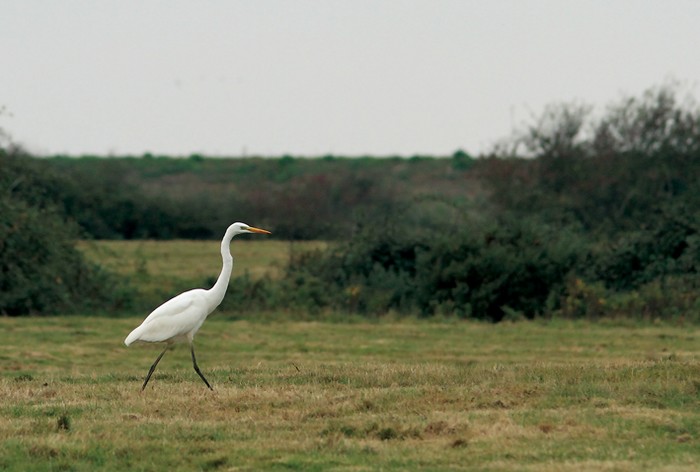
What to say about Spoonbills this week? There were an awful lot of spatula-faces to be found, and none more so than in the delightful environs of Poole Harbour – a record breaking count of 47 of them was made at Brownsea Island lagoon on 11th, a number only slightly missed by Arne on 13th when 45 birds were noted, before the magic 47 was tallied here too on 14th. It can’t be long before there are breeding birds elsewhere in the UK than north Norfolk – a welcome and spectacular addition to our breeding avifauna.
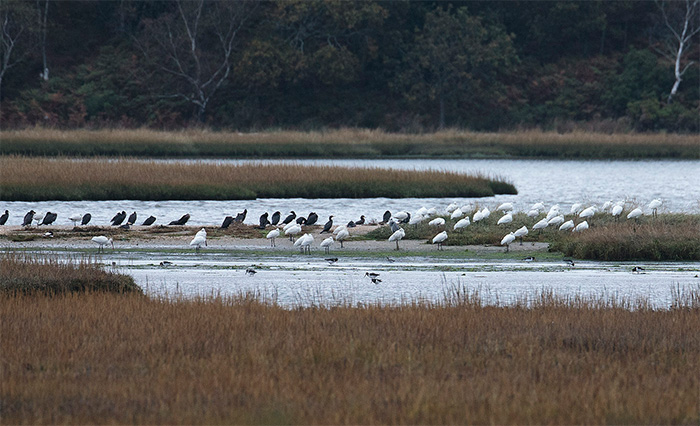
Elsewhere, some 13 other birds were noted around the country. The juvenile remained at Pagham Harbour (West Sussex) on 9th-11th; one remained at Gibralter Point (Lincolnshire) on 8th, with two birds there on 12th; and Scotland’s sole records for the week were the single bird that remained at Findhorn Bay (Moray) on 9th-10th, and one in Fife on the Eden Estuary on 12th. A single bird remained kicking around Scilly until 13th at least, being noted on Samson, Green Island and Tresco; Norfolk accounted for single birds at Hickling Broad on 10th and Breydon Water on 11th-14th; flyover birds were noted in Essex at Colne Point on 11th, and Canvey Island on 13th; and finally Kent returned one over Boughton Park and two at Cliffe Pools on 12th.
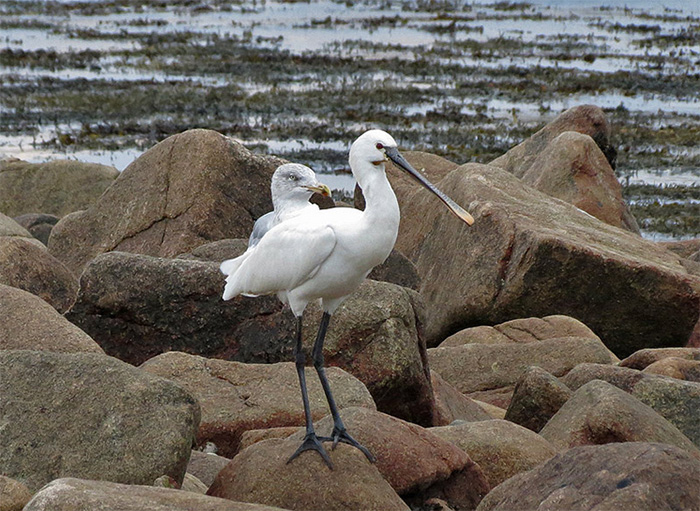
It’s all relatively quiet in the world of Glossy Ibises at the moment – just seven birds were logged this week. It’ll be interesting to see if the dizzy heights of last winter’s numbers are scaled again in the coming months. For this week though, single birds remained at Newington (Nottinghamshire) all week; at Wicken Fen (Cambridgeshire) on 10th; Dungeness (Kent) and Wat Tyler CP (Essex) on 11th; at Frampton Marsh RSPB (Lincolnshire) until 12th; and at Paxton Pits NR (Cambridgeshire) on 14th. In Wales, a single bird was at Malltreath Marsh (Anglesey) on 9th-10th, and in Ireland the regular individual remained at Tramore Blackstrand (Co.Waterford) until 11th.
A White Stork was noted in Norfolk near Great Yarmouth on 14th.
The last of this week’s long-legged beasties are Common Cranes, and where better to start than with the summer fixture in East Yorkshire, the first-summer at Molescroft Carrs on 8th-11th. Yorkshire also accounted for a party of six birds throughout the week at Thorne Moors, and at Swinefleet. Trios were noted over Arbroath (Angus) on 11th, and over Seaforth and Cockersand Abbery (Lancashire) on 12th. Further single birds were seen over Colliford Lake (Cornwall) on 11th and at Blithfield Reservoir (Staffordshire) on 13th-14th, and the week closed with two seen heading out to sea over Portland (Dorset) on 14th.

Knocked out of the headlines by a new posse of rarities this week, the nevertheless very popular Little Crake remained happily ensconced at Minsmere (Suffolk) until 13th.
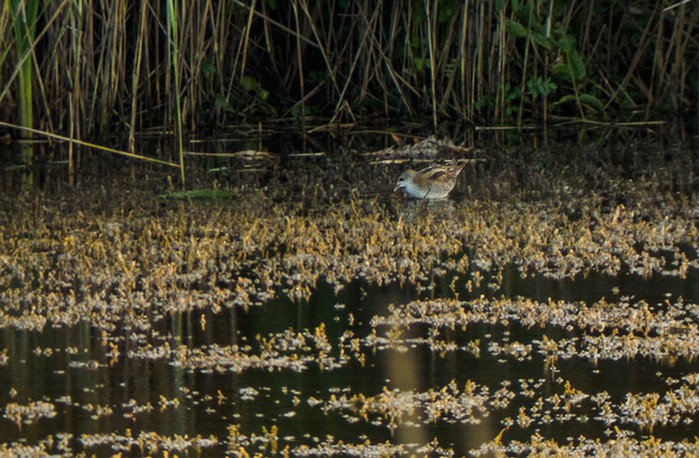
You can tell winter’s coming – the nights are drawing in, the leaves are falling, and the reports of interesting quackers are picking up their pace. It’ll soon be time to start casting unsubtle aspersions on the origins of some unfortunate Nearctic duck or other, or the criteria by which those in the corridors of power adjudicate upon them. But for now, we’ll start the ball rolling with the week’s interesting geese...
Three or four Black Brants were reported this week, one at Butterstreet Cove (Dorset) on 12th, and then a single in Suffolk at Minsmere on 13th, with two birds seen going past Landguard that same day.
Back up in Scotland, there were Snow Geese to be had – all in Aberdeenshire, with one at Bullers of Buchan on 9th, two blue morphs at Loch of Strathbeg RSPB on 12th, and one at Fortevoit (Perth and Kinross) on 14th. Meanwhile, in Fife what should crop up with the Pink-footed Geese near Cowdenbeath on 10th but a possible Ross’s Goose? Well. Make of that what you will.
Less potentially problematic were the ducks this week, and few new faces popped up amongst some of those we’ve grown long-accustomed to. The drake Lesser Scaup was still in Cardiff Bay (Glamorgan) on 10th, while in Ireland a first-winter female was to be found in Co.Galway at Rahasane Turlough on 12th.
The drake Ring-necked Duck remained on Rutland Water (Leicestershire) until 14th, while a further two drakes were reported from Loch Sturmore on North Uist (Western Isles) on 8th. A further first-winter/female individual was found in Cornwall at Drift Reservoir on 13th-14th.
American Wigeon numbers climbed slightly to four this week: the drake remained at Loch Ryan (Dumfries & Galloway) until 11th, with further birds on Sanday’s North Loch (Orkney) on 10th still, at Udale Bay (Highland) on 12th, and in Ireland on the Culdaff Estuary (Co.Donegal) on 13th-14th.
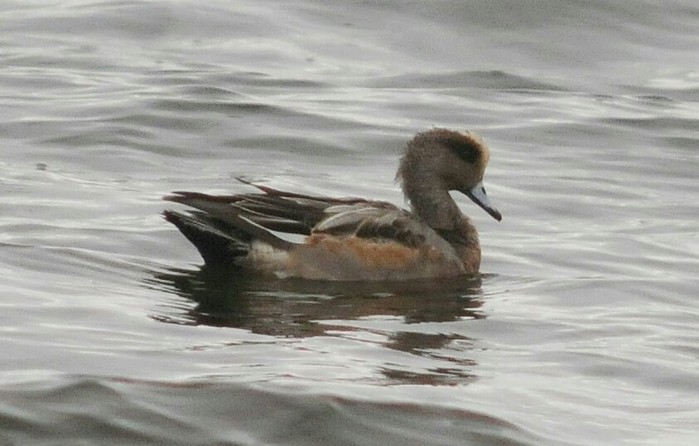
Still quiet where Green-winged Teal are concerned, with just the regular Caerlaverock (Dumfries & Galloway) drake on offer all week long. Further south, in Northumberland the adult female (or hybrid) Blue-winged Teal remained on the River Wansbeck on 10th.
Seaduck round things off, with a scattered half dozen drake Surf Scoters dominating proceedings: in Burghead Bay (Moray) on 9th-11th; at Musselburgh (Lothian) on 9th-14th; on Loch Fleet (Highland) again on 10th; in Inganess Bay (Orkney) on 12th-14th; off Pensarn (Conwy) on 12th; and at The Hermitage (Co.Louth) on 12th-13th. The sole King Eider of the week was the drake again in Burghead Bay (Moray) on 10th-11th.
Another terrific week’s showing from the shorebirds this week, with plenty of variety on offer. Topping the bill (in-hand Great Snipe aside) would be the dapper Solitary Sandpiper present all week long at Rathanganon (Co.Wexford).
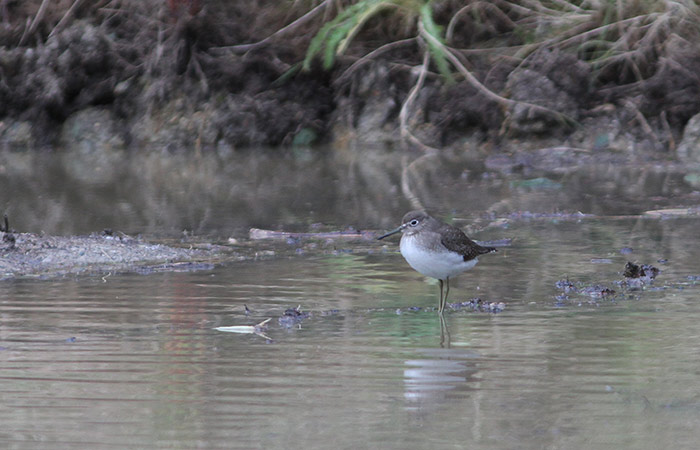
A number of individuals of various Nearctic species provided a strong supporting cast: staying in Ireland to begin with, the Lesser Yellowlegs remained on Rogerstown Estuary (Co.Dublin) until 13th, and in Co.Wexford a Buff-breasted Sandpiper was at Tacumshin on 12th. A further Buff-breasted Sandpiper was in Wales at Marloes Mere (Pembrokeshire) on 14th.
In Scotland, the White-rumped Sandpiper was again at Balgarva on South Uist (Western Isles) on 13th; meanwhile, down on the East Sussex / Kent border, an adult American Golden Plover was seen at Scotney GPs on 11th and possibly again on 12th.
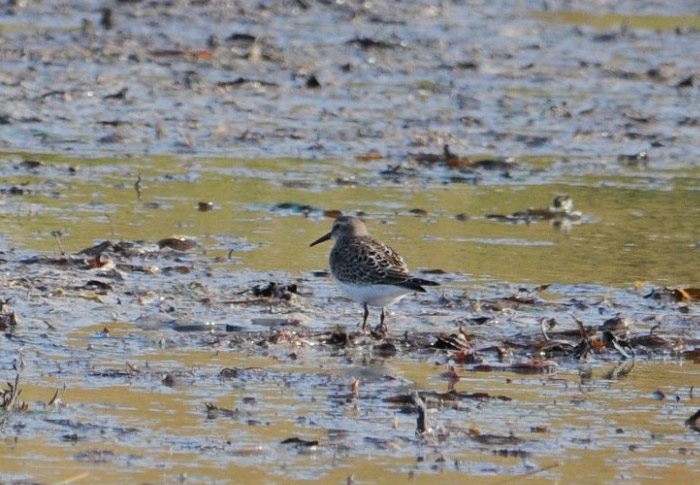
Where Pectoral Sandpipers were concerned things were somewhat quieter than of late, with a mere nine birds logged. Nottinghamshire’s Idle Valley NR held onto its bird until 13th; other lingering birds hung around at Burwell Fen (Cambridgeshire) until 11th, Nosterfield Quarry (North Yorkshire) until 12th, and Saltholme RSPB (Cleveland) until 13th. Scilly laid claim to a settled bird on Bryher from 9th-13th. Further individuals were in Ireland at Lough Corrib (Co.Galway) on 9th and at Carrahane Strand (Co.Kerry) on 13th; in East Yorkshire at Swine Moor on 12th; and over Beddington SF (London) on 13th.
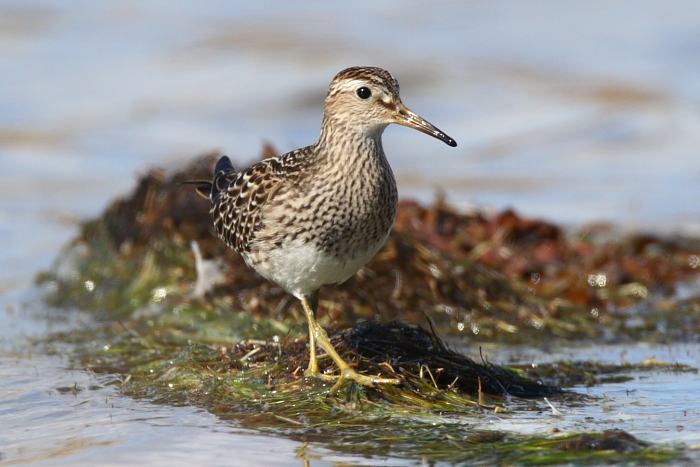
Five scattered Dotterels were seen from the far south-west right up to the far north this week – one was settled on Tresco (Scilly) on 8th-12th; one was at Radwell GPs (Bedfordshire) on 12th; and in Shetland two birds were on Fair Isle on 8th, with one still present on 14th.
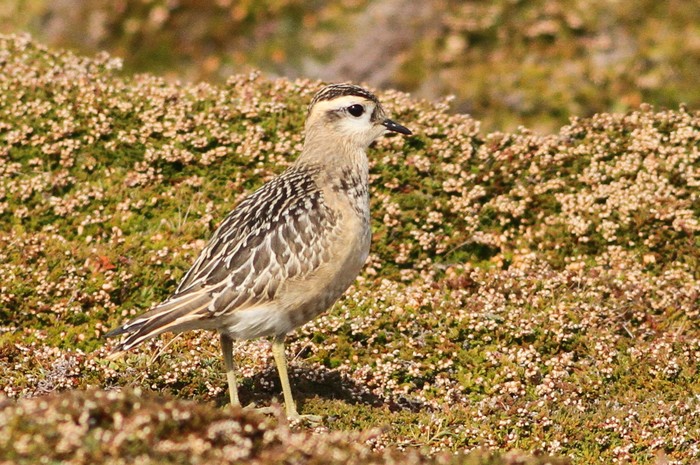
Last but by no means least, we come to Grey Phalaropes - and the unsettled weather meant for some activity on this front with some 50 individuals logged and some inland birds amongst their number. Starting then with notable counts, Dorset’s Chesil Cove hosted three birds on 10th with two still there the following day; five birds were recorded from a Scilly pelagic on 10th, and a further count of five came from the Scillonian on 11th; two birds were noted at Stolford (Somerset) on 12th; and on 13th, one bird was on Simmonds’s Scrape at Cley while two birds flew past offshore, and another pair of birds were in West Sussex at Pulborough Brooks RSPB.
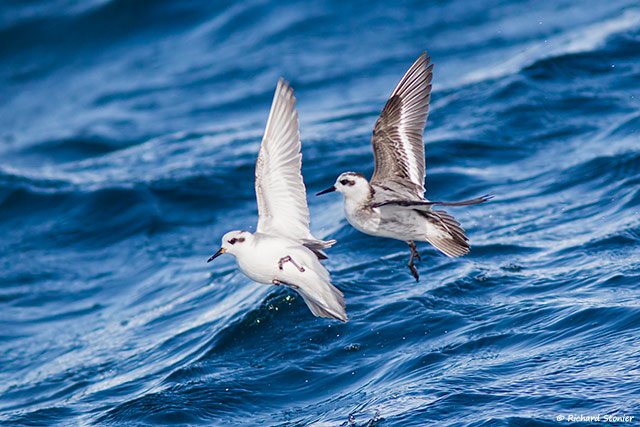
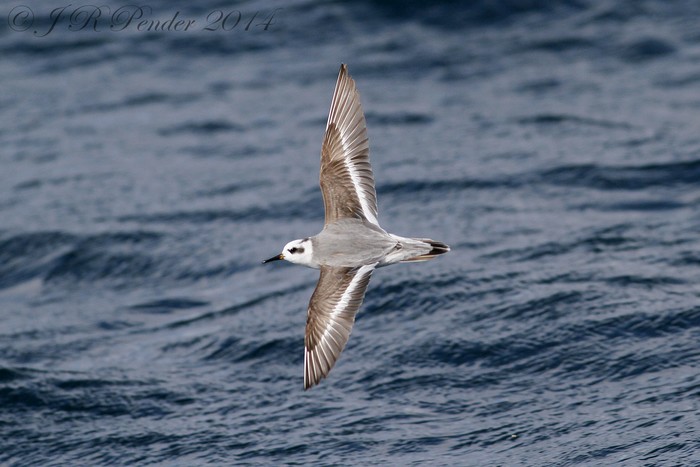
Single birds were logged on 8th from Baltasound, Unst (Shetland), Tresco (Scilly), Old Head of Kinsale (Co.Cork) and at sea off Co.Kerry (with another bird noted off Kerry the following day). One remained in Lincolnshire at Freiston Shore RSPB from 8th-12th. Singetons were seen on 10th at Tadnoll and Winfrith DWT (Dorset), Flamborough Head (East Yorkshire) and inland at Winterbourne House (West Midlands), this bird lingering until 12th. The 11th saw two further single birds noted at Peterstone Wentlooge (Gwent) and Piltanton Burn (Dumfries & Galloway), whilst on 12th more individuals were at Easington (East Yorkshire), Lundy (Devon), Thornham (Norfolk), and at sea off Co.Cork east of the Kinsale gas fields. More displaced birds were logged on 13th, with individuals off Canvey Island (Essex), Blacktoft Sands (East Yorkshire), Hengistbury Head (Dorset), Hollowell Reservoir (Northamptonshire) and a further probable bird in the evening at Eyebrook Reservoir (Leicestershire). The 14th was every bit as busy, with two birds again off Cley and one at Titchwell (Norfolk); two in Northamptonshire at Pitsford Reservoir; two at Pulborough Brooks RSPB (West Sussex); one on Berkshire’s Queen Mother Reservoir, and one on Surrey’s QEII Reservoir; and one in Hertfordshire on Wilstone Reservoir.
More signs of winter’s imminent arrival this week where gulls were concerned. Not content with the first white-wingers being seen, we had the return of the adult Bonaparte’s Gull to Dawlish Warren on 12th; and a further adult Bonaparte’s was picked out at Whitburn (Co.Durham) on 13th.
The second-winter Laughing Gull was once again in Co.Cork at Ballycotton on 9th.
Elsewhere in Ireland adult Ring-billed Gulls were at Portrush (Co.Antrim) on 9th and Cruisetown Strand (Co.Louth) on 12th again. In Scotland, the adult was again noted at Dingwall (Highland) until 11th at least.
An unconfirmed report of a possible second-winter American Herring Gull in Cornwall at Par Beach remains, for now, a mere possibility. One for any Scilly-bound birders to check out in the coming days for sure...
Those white-winged gulls previously alluded to came in the form of an Iceland Gull at Tory Island (Co.Donegal) on 12th, and two Glaucous Gulls, one apiece for Rubha Ardvule, South Uist (Western Isles) on 11th and Rusheen Bay (Co.Galway) on 12th.
The end of the week saw a nice little surge of Sabine’s Gulls being recorded, surely one of the most aesthetically pleasing gulls of the lot. (Yes, I know, some young gulls have looks only a mother would love, but what’s not to love about a Sab’s in any plumage?) The week’s return began with a cracking adult at sea east of the Kinsale gas fields off Co.Cork on 12th; but then picked up a good head of steam on 13th with single birds reported up the east coast from Aldeburgh (Suffolk), Cley (Norfolk), Sandilands (Lincolnshire), Hartlepool Headland (Cleveland), St Mary’s Island (Northumberland) and St.Abb’s Head (Borders), with three birds past East Yorkshire’s Spurn. One passed Lower Hope Point (Kent) on 14th.
Topping the bill for the raptors this week is the continuing presence of the stunning Snowy Owl up in the Cairngorms (Aberdeenshire / Moray) at Ben Macdui. Well worth the effort for those who’ve seen it, and it’s proving sorely tempting for your own correspondent…
Just one Gyr Falcon reported this week, last week’s grey morph lingering around the Butt of Lewis (Western Isles) on 9th still.
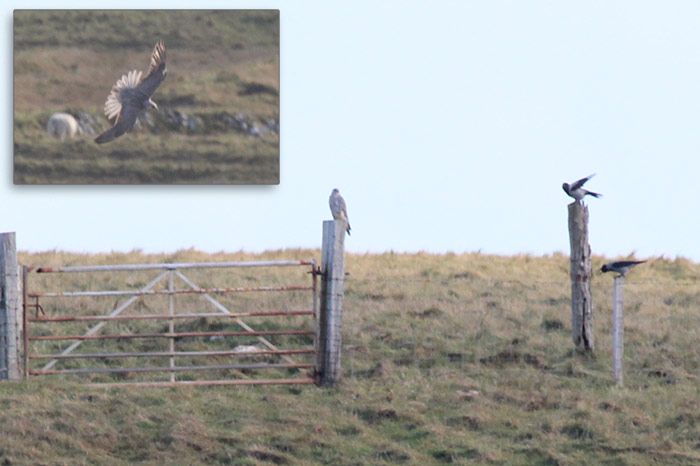
Further winter chill cast into the hearts of all potential prey items this week with reports of more Rough-legged Buzzard arrivals, these being seen at Chelmondiston (Suffolk) on 11th, at Sedgefield (Co.Durham) on 12th with a probable at Holmfirth (West Yorkshire) the same day, at Bishop Middleham (Co.Durham) on 13th, and a trio of sightings from 14th – at Gibralter Point (Lincolnshire), and from Kilnsea and Easington (East Yorkshire).
A Honey Buzzard was over Tide Mills (East Sussex) on 11th.
The now regular autumn staple of Pallid Harriers continued to deliver, with a juvenile bird seen at Loch of Strathbeg RSPB (Aberdeenshire) on 8th, and a further possible juvenile in Shetland at Bigton on 10th. A possible Montagu’s Harrier was reported from Devon at Northam Burrows CP on 12th.
Further southwest still, a Black Kite was seen to come in off the sea and fly inland at Nanquidno (Cornwall) on 13th. A much larger proposition altogether was a White-tailed Eagle on Holy Island (Northumberland) on 12th.
Right, deep breath... and here we go. Passerines. Oh boy, were there one or two of these this week.
We’ll kick of proceedings with the biggest news of the week, numerically at least, and that’s the one that’s been exercising me the most the past seven days: Yellow-browed Warblers. What’s the collective noun for many, many Yellow-browed Warblers? Answers on a postcard… Having spent much of my week’s commuting time entering them all into a spreadsheet to bring you some scores on the doors, I can think of one or two choice suggestions of my own. None of which are printable! They’ve gone beyond being charming, beautiful scarce migrants and become something of an Excel spreadsheet nemesis. I hear them tsooeet-ing in my nightmares…
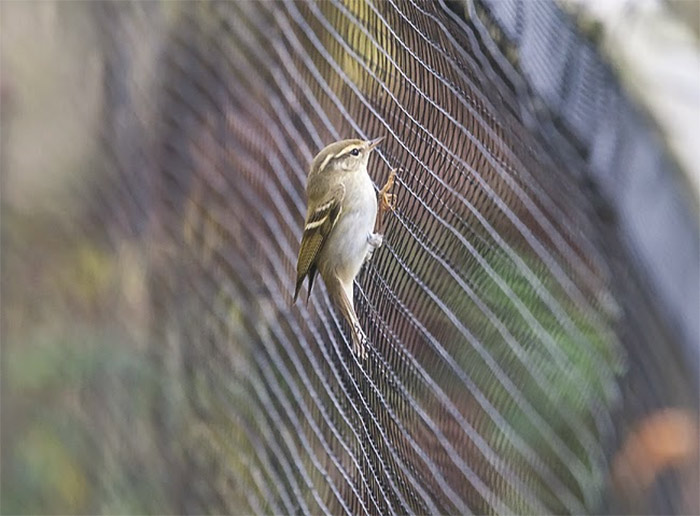
Suffice to say, there were a LOT of them this week. To be as precise as one can be under the circumstances (keeping track of these things when there’s an ongoing arrival and dispersal going on is somewhat challenging, to say the least), there were at least 420 birds recorded this week. And that’s definitely an underestimate. I’ve erred on the side of caution with the data to hand, and these are just the ones that birders have found… and given how much of the coast goes unwatched, and how happy these birds will be in any suburban coastal garden rather than the ‘promising’ scrubby bits we tend as birders to concentrate on… and given how they’ve penetrated as far as Ireland’s south-west coast, they could be almost anywhere across Britain and Ireland… the true figure for them must be immense this week.
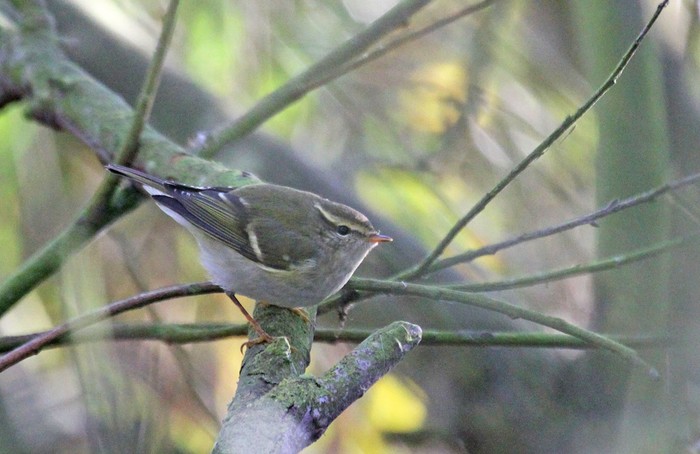
You don’t want a blow-by-individual-blow account of every single one of the known birds – trust me, we’ll be here all day – so we’ll conclude with an impressive headline figure that puts this remarkable arrival into some context. Barra, off the west coast of Scotland, tallied no fewer than 28 individual birds alone on 8th.
And for all that, there was a mere handful of Pallas’s Warbler records this week – a probable in Aberdeenshire at Bridge of Dee on 8th; two birds at Donna Nook (Lincolnshire) on 13th; and then a flurry of records in Norfolk on 14th, with birds logged at Scolt Head Island NNR, Holme Dunes NWT, and Great Yarmouth cemetery.
Radde’s Warblers put on a good show, with half a dozen recorded over the week. Singles were seen at Mid Dale, Walls (Shetland) and Troup Head (Aberdeenshire) on 8th; at Sea Palling (Norfolk) on 11th; and at Flamborough Head and Kilnsea (East Yorkshire) and Donna Nook (Lincolnshire) on 12th, the former and latter birds remaining there until 14th. Further birds were found at Brancaster, Burnham Overy, Great Yarmouth, and Wells Woods (Norfolk) and Gibralter Point (Lincolnshire) on 14th.
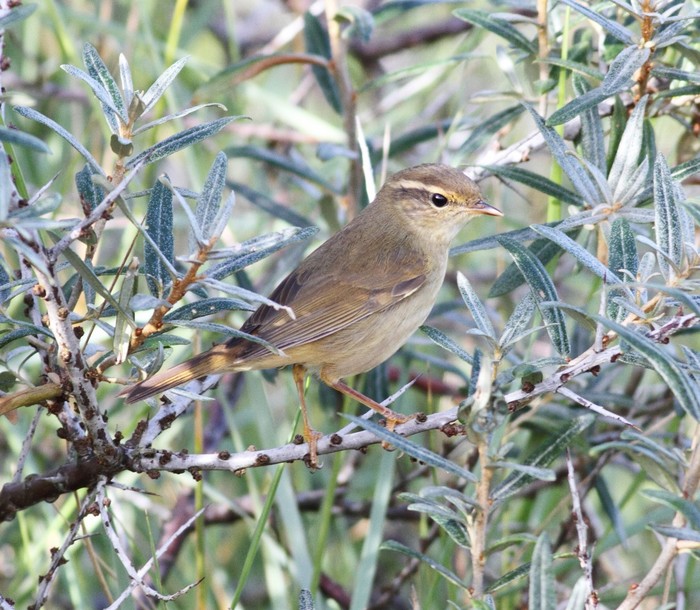
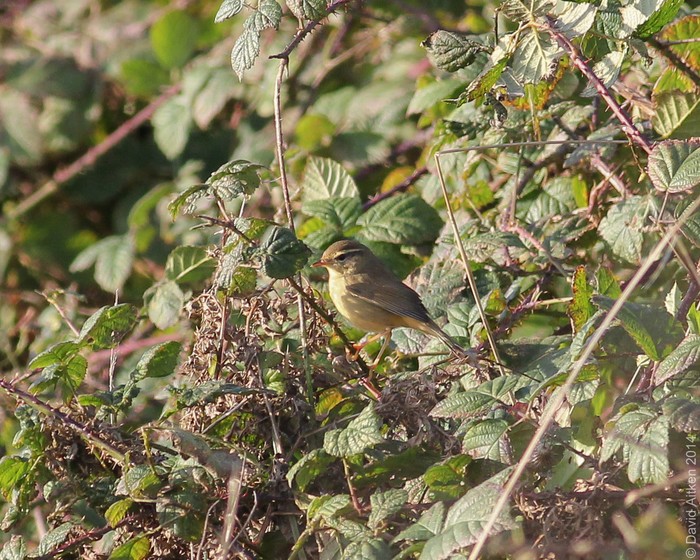
Lingering quality came in the form of the Quendale Lanceolated Warbler still in Shetland on 8th. Meanwhile Skomer (Pembrokeshire) still had Melodious Warbler on 10th; and a similarly late Icterine Warbler was to be found up in the north-east at Cruden Bay (Aberdeenshire) on 9th.
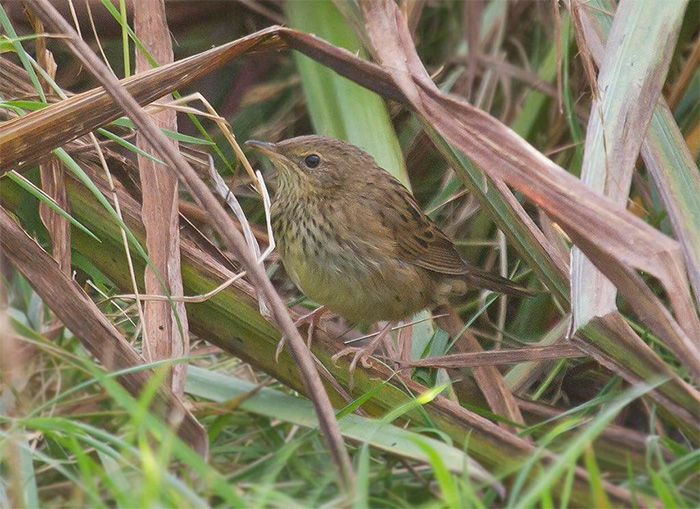
The east coast had other warbler gems on offer this week – starting in Scotland, Torness Point (Lothian) hosted a Booted Warbler on 11th-14th, whilst Lincolnshire held an Arctic Warbler at Donna Nook on 11th-14th.
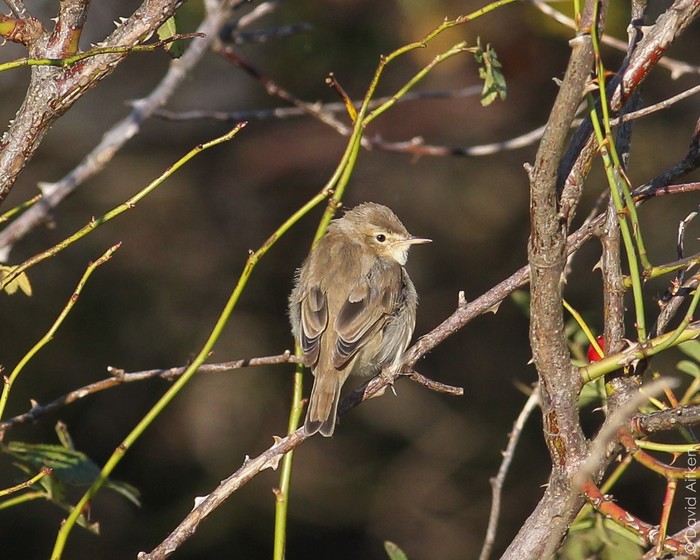
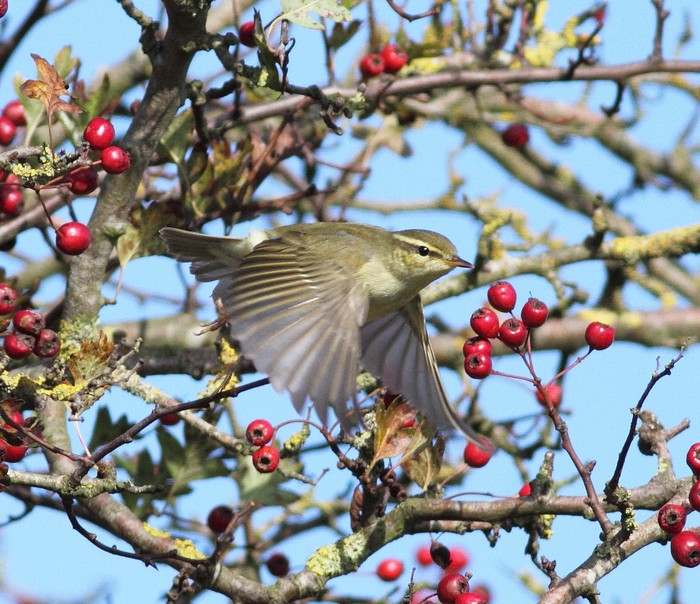
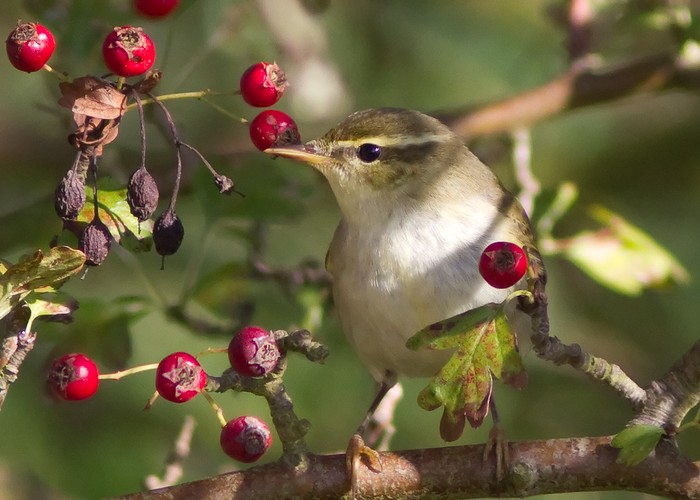
News filtered out of Foula (Shetland) at the week’s close of a Sardinian Warbler there on 13th. That’s an excellent Shetland record, and is only the 8th record for the archipelago, and only the second one found in the autumn.
More standard autumn fare came in the form of two Marsh Warblers - one apiece for Point of Ayre (Orkney) on 9th and Barra (Western Isles) on 12th-14th – and Barred Warblers: examples of the latter were on St.Mary’s (Scilly) on 8th-14th; at Kilminning (Fife) on 8th-10th; on Barra (Western Isles) and Whalsay (Shetland) on 8th; on 9th, at Melvich and Staxigoe (Highland), Levenwick (Shetland), Kilminning (Fife) (until 11th), and Cape Clear (Co.Cork); and on 11th, birds were seen on Gugh (Scilly), at Porthgwarra (Cornwall), Fair Isle (Shetland) (until 14th) and Bardsey (Gwynedd) (until 14th).
All of which saves the best, potentially, warbler til last. It could so easily have crept into the headlines, and it may yet do so in the coming week. All it needs is a confirmatory call to be heard… does that sound familiar, Eastern Bonelli’s twitchers? This one however is an even more recent split still – an adult male Subalpine Warbler sp. at Porthgwarra (Cornwall) on 10th-13th that the internet chatter is mooting as a possible Moltoni’s. Some say it might be doable in-the-field on plumage… but the more cautious stress the need for a diagnostic call to be heard. Another tricky and subtle autumn warbler sent to try our collective patience… and another obstinately silent individual.
Far more straightforward are Red-breasted Flycatchers this week (and I am, of course, assuming that all of these have been thoroughly checked for signs of Taiga!) – around 20 individuals were logged, at all points of the compass. On 8th, Scotland accounted for birds at Butt of Lewis and Barra (Western Isles), Collieston (Aberdeenshire), Lossiemouth (Moray), Tiree (Argyll) (until 9th) and East Burra (Shetland). Further Scottish records came from Toab (Shetland) on 9th, Hestingott (Shetland) on 10th, Port Nis (Western Isles) on 11th, Mid Yell (Shetland) on 13th-14th, and two on Fair Isle on 14th.
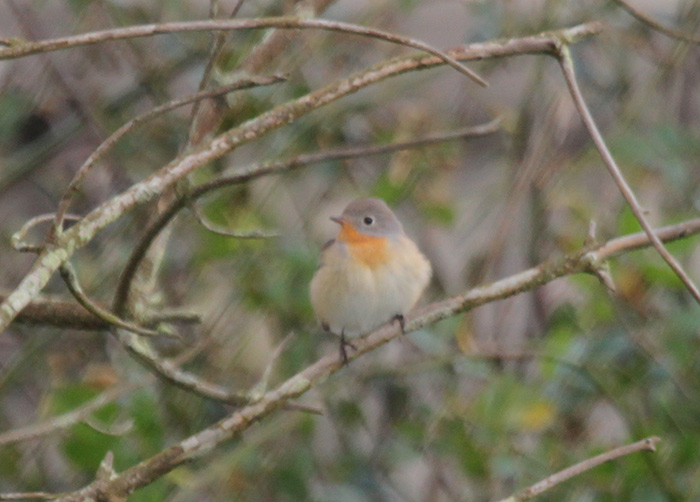
English records came from Hartlepool Headland (Cleveland) still on 8th, and on St.Mary’s (Scilly) on 8th-14th; at Porthgwarra (Cornwall) and Portland (Dorset) on 10th; from Flamborough (East Yorkshire) on 11th and 13th-14th; at Marsden Quarry (Co.Durham) on 12th; and St.Martin’s (Scilly) on 13th-14th. Elsewhere on 14th, birds were found at Long Nab (North Yorkshire) and Lowestoft (Suffolk).
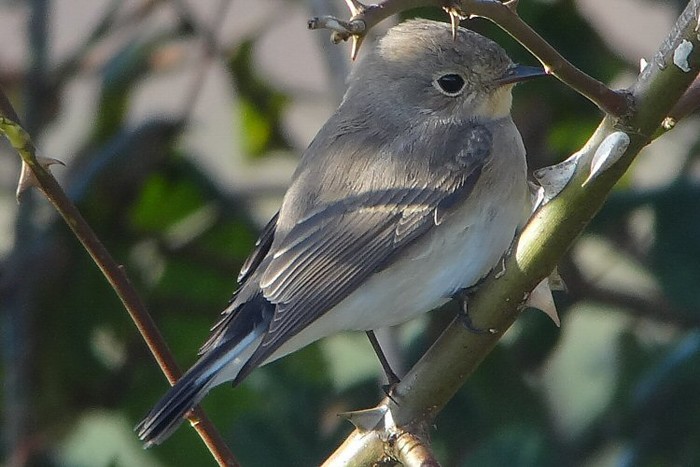
Ireland got in on the act too, with individuals noted at Garinish Point (Co.Cork) on 12th-13th and at Inishboffin (Co.Galway) on 13th.
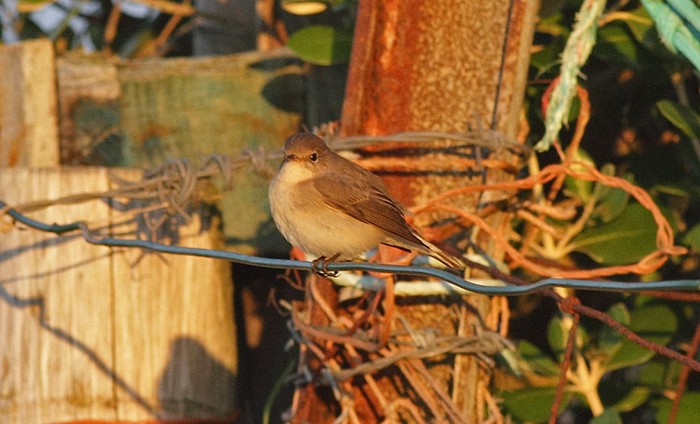
A solitary White’s Thrush was reported this week from Levenwick (Shetland) on 8th. With half of October still to come, you’d not bet against some other hot thrush action before the month’s out.
Similarly, these days you’d have to assume that Red-flanked Bluetail was a dead cert for any self-respecting yearlister. Sure enough, this week was the week they began to come through, starting (where else?) in Shetland with one at Dale of Walls on 12th, and another trapped and ringed on Fair Isle on 13th, the same day one was found in Norfolk at Warham Greens; and the following day, 14th, one was at Stiffkey. Surely there will be more in the post, and maybe there’ll be a rarer robin too…
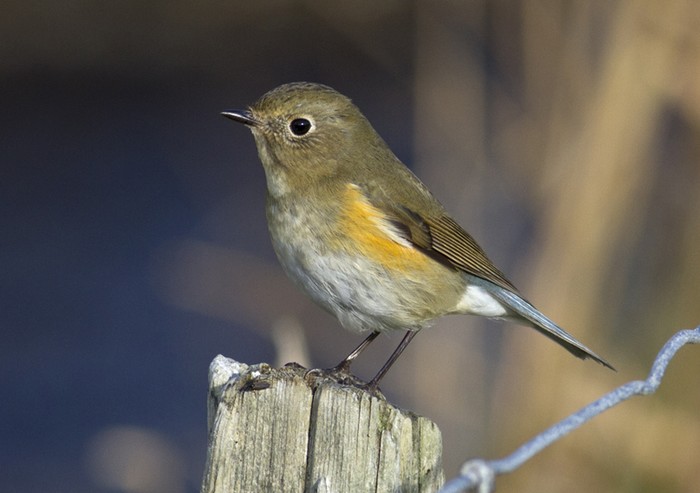
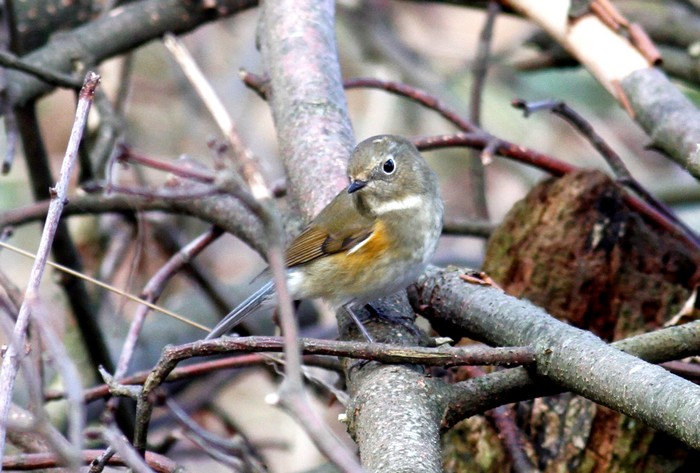
Time was when Bluethroats were, if not two a penny, then a flipping sight commoner in autumn than they currently are. It’s a sign of the times when they’re rarer in the UK than Red-flanked Bluetail in a given week… but so it proved in the past few days with just three records to show for themselves. Two remained in Shetland on 8th, at Baltasound on Unst, and at Toab, and a further bird was in Aberdeenshire at Whinnyfold, also on 8th.
I don’t really want to talk about Siberian Stonechats - missing adding it to the house list last week was really, really painful. It’d have been my 175th species too. Bah. Anyway, moving swiftly on from bitter introspection corner, there were two more elsewhere in Shetland this week – on Fetlar on 8th, and at Hoswick on 11th – and one in Lothian on Torness Point on 14th.
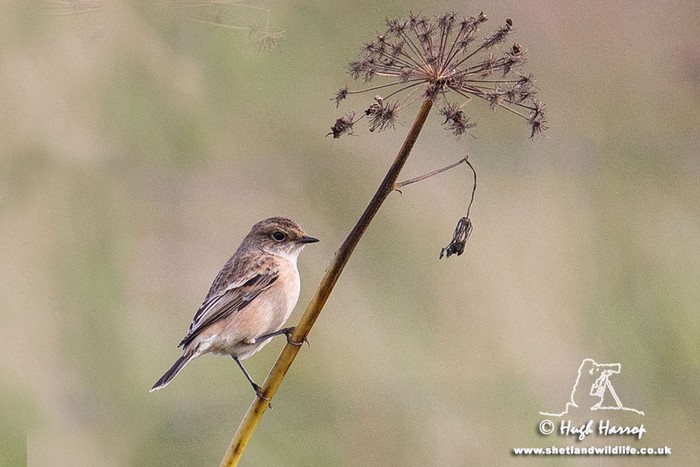
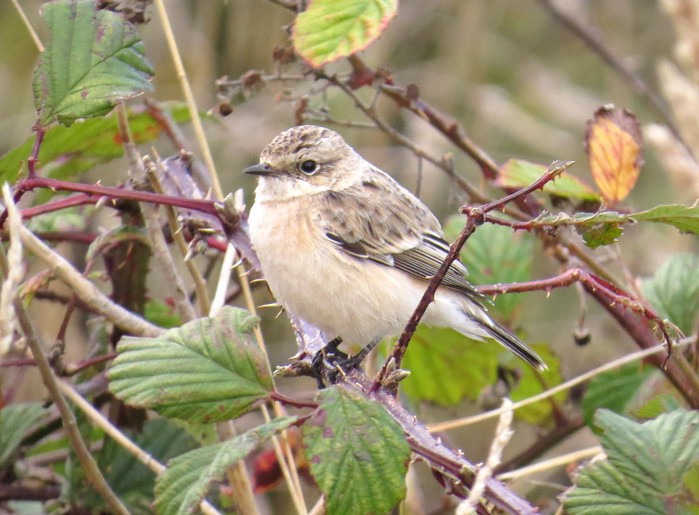
Rolling on now to the pipits, and another large batch of goodies to whet the appetite of anyone who’s thinking of heading to the east coast this coming weekend. It can’t just be Shetland that’s knee-deep in Olive-backed Pipits you know…
We’ll start though with Richard’s Pipit, and a good tally for that species – just shy of 10 individuals logged in the week. A probable was in Lancashire at Heysham on 8th, followed by further birds at Gibralter Point (Lincolnshire) on 10th; Burnham-on-Sea (Somerset), Kilnsea (East Yorkshire), St.Agnes and St.Mary’s (Scilly) on 11th, the last bird still there on 12th;Burnham Overy and Horsey (Norfolk) on 12th; Tresco (Scilly) on 13th; and Cogden Beach (Dorset) and Salthouse (Norfolk) on 14th.
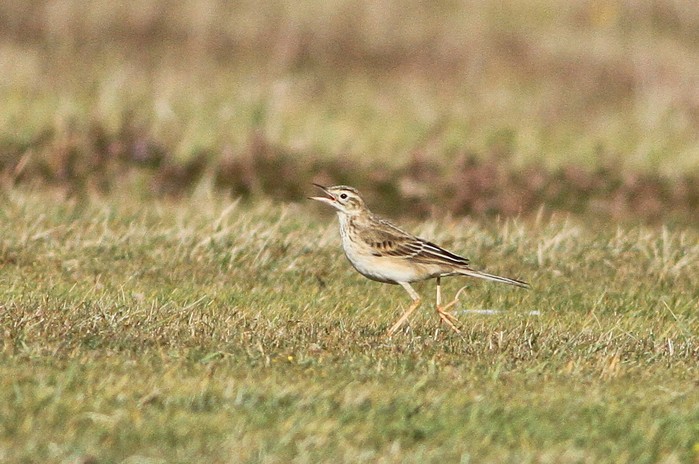
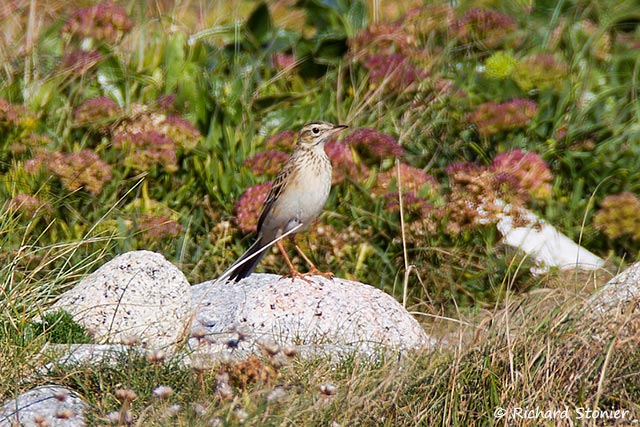
Remaining on Scilly, a Tawny Pipit was on St.Agnes on 10th, and the Blyth’s Pipit remained on St.Mary’s until 9th. Another Tawny remained at Tide Mills (East Sussex) on 10th-11th.
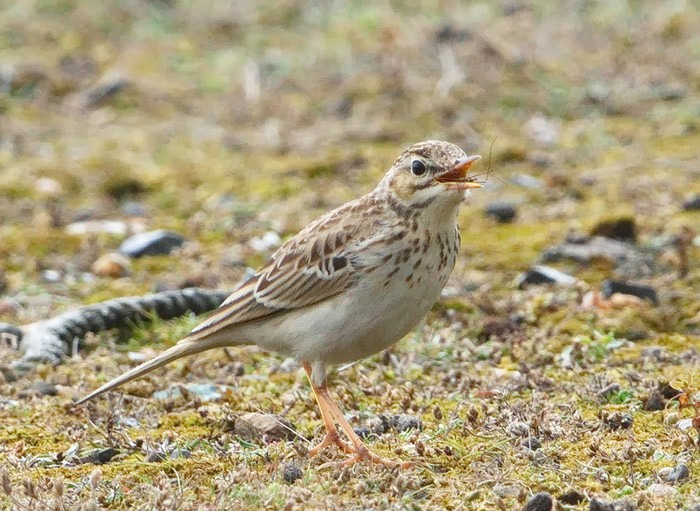
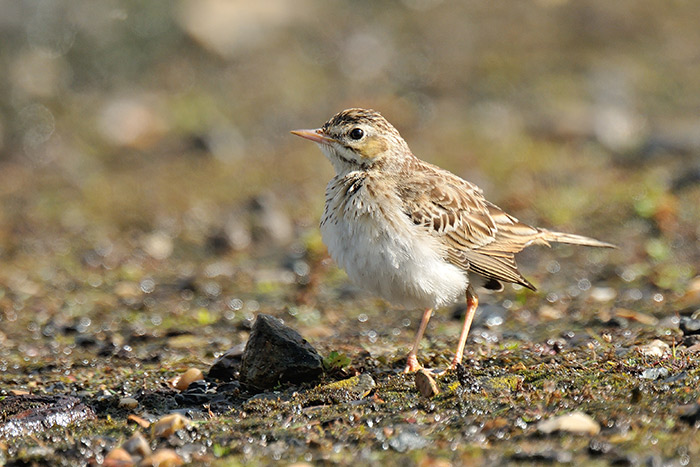
In what’s been a fairly quiet autumn for the species, a Pechora Pipit was found at Kergord (Shetland) on 11th, following one on North Ronaldsay (Orkney) on 8th.
Olive-backed Pipits had a bit of a thing on Shetland this week. Quite frankly, it’s reached a stage when I’m getting a bit disappointed when a pipit lifting out of the bushes proves to be a Meadow. It feels like they’ve been everywhere. Orkney briefly threatened the monopoly at the start of the week, with an impressive four birds on North Ronaldsay on 8th (and one still there on 10th) and a further bird on Housay on 8th-11th. Meanwhile, on Shetland, things were just getting a bit silly.
The 8th was busy – with single birds found on Fair Isle, Fetlar and Yell, at Levenwick and Loch of Asta on Mainland, and a further two birds at Vidlin on Mainland. Unst laid claim to another on 9th, before the 10th kicked off with another small flurry of records: one at Loch of Norby, and another two birds at Lower Voe. On then to 11th, another bird on Unst, and three more on Mainland at Wadbister, Exnaboe, and Wester Quarff. Another pause to catch one’s breath with just one bird found at Boddam on 12th, and then two birds found in a residential area of Lerwick on 13th, with further birds that day on the offshore islands – a single on Foula, and no less than three on Fair Isle (which, for the sake of variety, also hosted a Red-throated Pipit on 13th). Making that around 21 Olive-backed Pipits in Shetland this past week… which isn’t bad going, really.
In Norfolk, a single bird was at Wells Woods on 14th.
And so to shrikes, and two star grey shrikes to kick things off – the lingering and photogenic Steppe Grey Shrike continued to delight all comers in Norfolk at West Runton all week long, while Bedfordshire hit the jackpot with a smart Lesser Grey Shrike at Biggleswade Common on 10th. This was only the second record for the county, the first being way back (and picked up dead) in 1907 – so really to all intents and purposes, a county first.
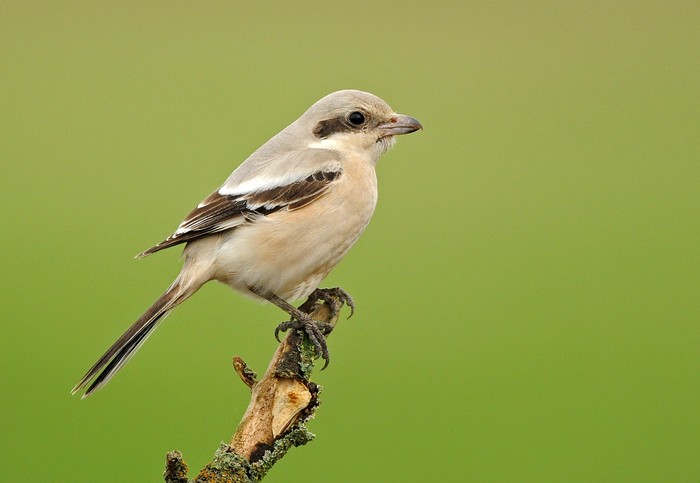
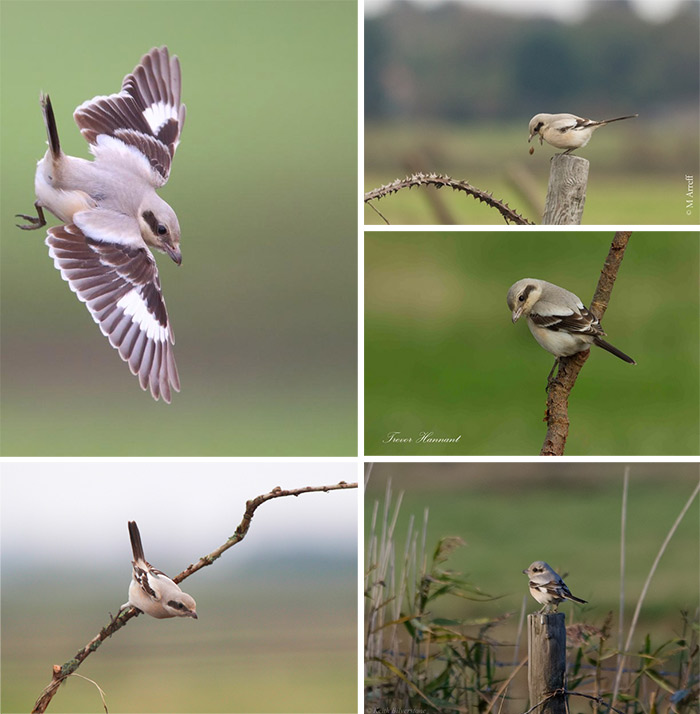
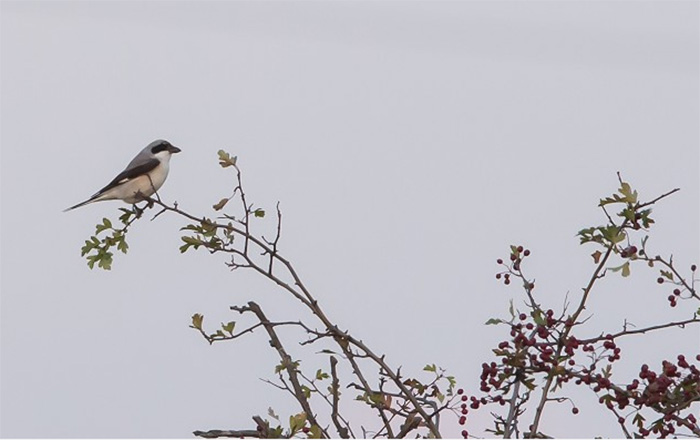
With a good easterly blow came a wave of Great Grey Shrikes this week, their distribution showing neatly just where those easterly winds were hitting, and when. Shetland benefited initially, with single birds on Out Skerries on 8th-11th, and elsewhere on 8th at Pool of Virkie, on Unst, on Fetlar, and on Fair Isle. Further birds were found at Bigton and elsewhere on Unst on 10th, the latter bird lingering at Northdale until 11th. Finally, birds began to hit the mainland east coast, one at Leuchar (Fife) on 11th-12th being the vanguard for a focused fall in Norfolk on 13th – with two birds on Blakeney, and single birds at Hunstanton and Walsey Hills – and a further bird in East Yorkshire that day at Spurn. This continued on 14th with birds noted at Burnham Overy, Scolt Head Island, Stiffkey and Cley (Norfolk), and in East Yorkshire with two birds at Spurn, and further singles at Easington, Flamborough, and Kilnsea. Other birds were noted on 14th in Lincolnshire at Frampton Marsh RSPB and Gibralter Point, in East Yorkshire at Filey, and in Cleveland at South Gare.
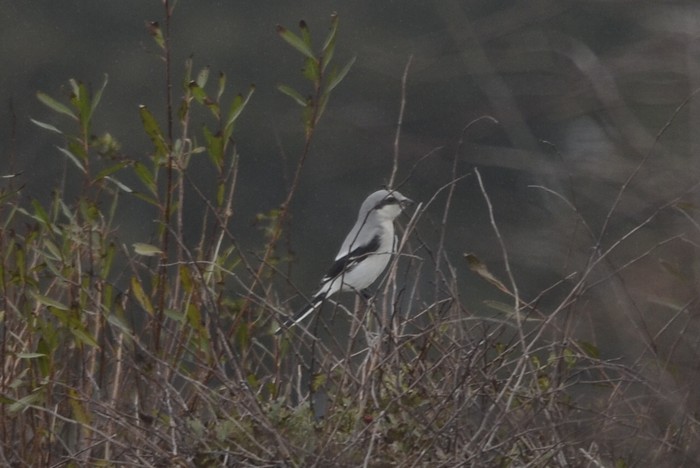
Red-backed Shrike numbers were more modest, with single birds noted at Ness Point (Suffolk) on 9th-14th; West Runton (Norfolk) on 12th-13th; on Fetlar (Shetland) on 13th; and at East Prawle (Devon) on 14th.
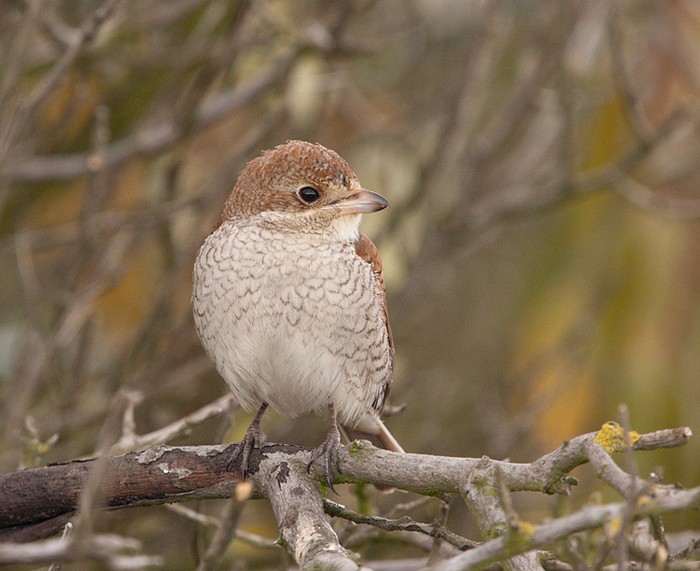
A final canter now through various odds’n’sods of a generally crowd-pleasing and (sometimes) colourful nature before we hit the finches and buntings, and the move onto the stuff of pure fantasy. Starting with Waxwings, of which there were two in Shetland, at Tresta on 10th and Sullom Voe on 13th, and one more in East Yorkshire at Easington on 14th.
Hoopoes were less Shetland-centric, with just two there, at Gott still on 12th, and Dale of Walls on 8th-12th. Other birds were seen in Highland at Alturlie Point on 9th, in Bedfordshire at Willington on 8th-11th, and in East Yorkshire at Kilnsea on 14th.
A reasonable haul of Rose-coloured Starlings this week, albeit most of them were decidedly un-rosy young birds. Juvenile birds were the order of the day, with birds present in St.Ives (Cornwall) on 8th-9th; in Dorset at Portland on 8th-14th; back in Cornwall in Penzanze on 10th-13th, and in Highland at Balnakeil on 10th again; in Co.Cork at Garinish Point on 11th, and on St.Mary’s (Scilly) on 11th also; elsewhere on Scilly on Bryher on 12th-14th; and in Co.Cork at Mizen Head on 14th. The exception to this symphony in beige was a cracking adult in Lincolnshire at Anderby Creek on 10th-11th.
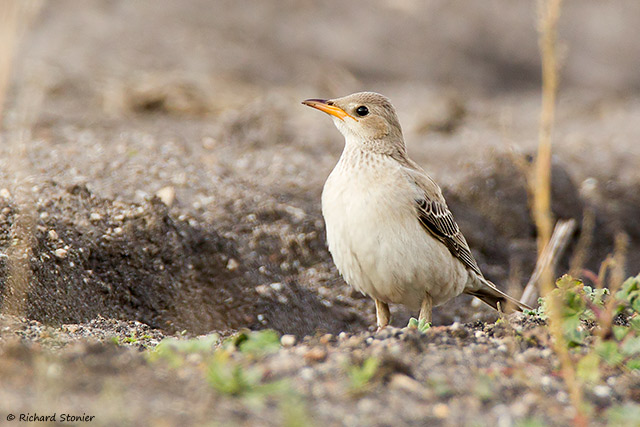
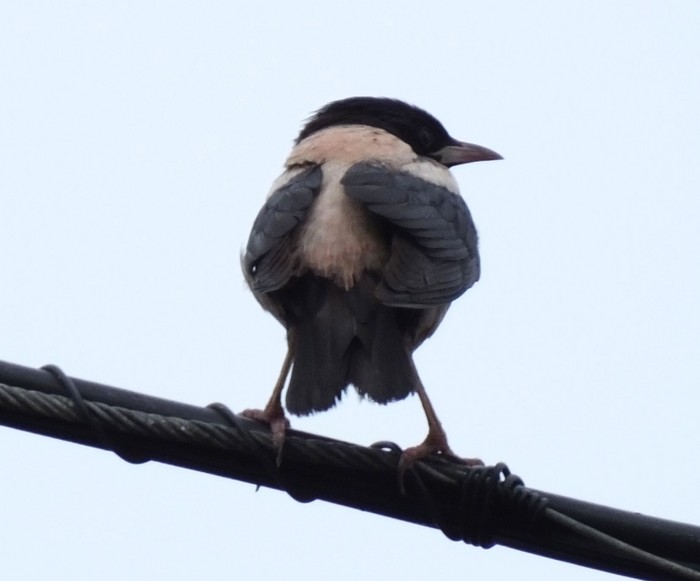
Wrynecks continued to feature, with a distinctly south-westerly bias. One was at Kenidjack (Cornwall) on 8th, with birds found (relatively) nearby on Scilly in the ensuing days – on St.Martin’s on 11th-12th, on St.Agnes on 12th, on St.Mary’s on 13th-14th and on Bryher on 14th. The 13th also saw birds found in Pembrokeshire on Skokholm and Skomer respectively, and on 14th another bird was found in Devon at Soft Sand Bay.
Penduline Tits cropped up both on Scilly and elsewhere this week, with a vocal bird at week’s end on St.Mary’s at Lower Moors, and another playing hard to see earlier in the week in Norfolk at Strumpshaw Fen on 11th-12th. Some less-than-vocal warblers could take note from these birds…
Whichever way I play this, I can’t pretend Short-toed Larks are aesthetically going to set the heart racing like some of the former birds. But still, they’ve got something going on, and it’s never a bad day’s birding when you see one in the UK. This week, there were a few to choose from, particularly if you happened to be on Scilly waiting for something American to turn up. One lingered on St.Agnes on 10th-14th, and another was on St.Mary’s from 10th-13th with a possible second bird reported there on 12th. Elsewhere, one lingered at Cemlyn Bay (Anglesey) from 8th-12th, two were at Loch of Hillwell (Shetland) on 8th, and bird was in an area with no public access in Cornwall at Sancreed on 8th also.
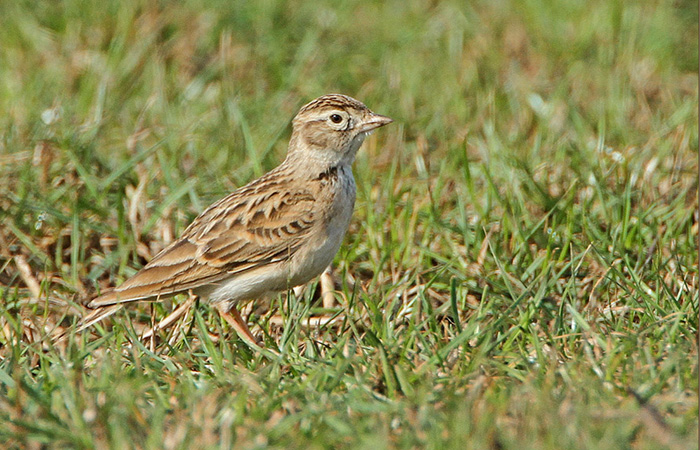
Far funkier, and sticking with the larks, was the Shore Lark present on South Uist (Western Isles) at Askernish on 9th-11th. Or should that read American Horned Lark? This bird showed features of the North American race alpestris… Which is a different kettle of pointier-billed fish altogether. Is that rare enough to lure the truly dedicated twitcher north? I guess it depends on what makes you tick…
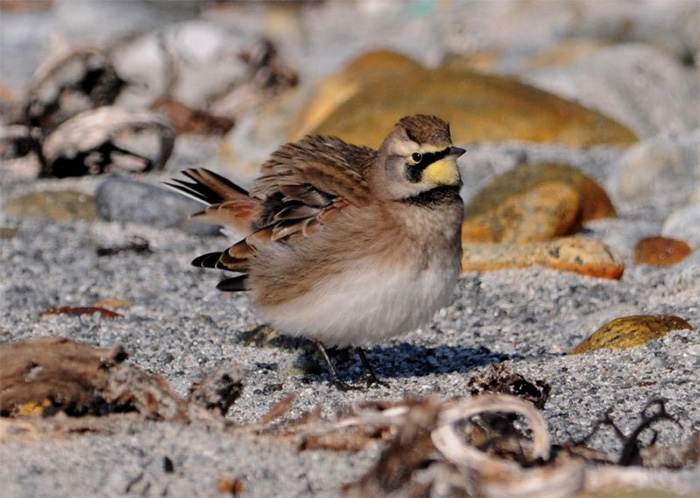
Funky is never an adjective that could be applied to an autumn Common Rosefinch. Formerly known as Scarlet Rosefinch, presumably until a taxonomist got out in the field one October afternoon and saw a first-winter bird, and just couldn’t handle the shame… There were a few around this week, as befits mid October: one was on Gugh (Scilly) on 8th, with presumably the same bird on adjacent St.Agnes on 9th; another Scilly bird was on Tresco on 8th-10th. Further north, one was on Unst (Shetland) on 12th, and one more was on Barra (Western Isles) on 13th.
There were two Serins to report this week – single birds flying over the Lizard (Cornwall) and Durlston CP (Dorset) on 11th alike.
An unconfirmed report of 12 Arctic Redpolls in the north of the Shetland mainland on 9th came to nothing further, though there’s ample precedent for multiple arrivals in Shetland in the past, and Shetland’s had a dose of potentially helpful northerlies in the past week.
More substantial in Shetland were Little Buntings. At the risk of sounding like a stuck record, there were plenty going around. The week kicked off with one all my own from last week – a tail-less and rather forlorn looking specimen on Whalsay still present from 8th-11th. Fair Isle racked up sightings through the week of a single bird, rising to two present there on 14th. Unst meanwhile enjoyed one bird at Baltasound on 8th-12th, and then raised its game to three birds there on 13th. Further birds were on the archipelago at Wester Quarff on 8th-10th; Vidlin on 8th; Hillwell on 9th-10th; two birds on the Out Skerries on 9th-11th; and one more at Swinister on 14th. Elsewhere in Scotland, single birds were at Bullars of Buchan (Aberdeenshuire) on 8th, and on South Ronaldsay (Orkney) on 10th. The southwest of England accounted for a single bird on the Lizard (Cornwall) on 11th-12th, and in Dorset at Durlston CP on 12th. Norfolk’s Warham Greens laid claim to a single bird in the morning of 14th.
Rather rarer in the grand scheme of things are Rustic Buntings, and the week delivered three birds at opposite ends of the country: one on Scilly on St.Agnes on 9th; the long-staying bird on Unst (Shetland) at Halligarth again on 12th-13th, and another on Unst at Uyeasound on 14th.
Increasingly rare these days are Ortolan Buntings, though fortunately they haven’t (yet) gone the way of Yellow-breasted Bunting. Three records this week of this smart little bunting: on 10th at Flamborough (East Yorkshire) and on St.Agnes (Scilly); and one over Portland (Dorset) on 11th.
And finally, several cups of tea, a whole packet of Jaffa Cakes and more Yellow-browed Warblers than I care to think about, we’re into the final furlong and a chance to look at what the coming week might bring. ‘Mystic’ Mark Golley has had some seriously uncanny form lately picking what’s just around the corner, so I have a lot to live up to.
And a quick glance at the past records for the coming week shows we have an awful lot of mouth-watering precedents to choose from, particularly in any week that features a healthy dose of weather coming in off the Atlantic – the cornucopia includes Black and Yellow-billed Cuckoos, a mess of Catharus thrushes, and colourful stand-alones of the calibre of Yellow-bellied Sapsucker, Rose-breasted Grosbeak and Baltimore Oriole.
But if we’re going American this week, all bets are off where accuracy’s concerned. These predictions are made with the heart, not the head, and never more so than where New World warblers are concerned. The roll call for the coming week is spectacular, to say the least...
Whilst the latest generation of birders might feel somewhat complacent about the likes of Blackpoll, Myrtle and even Black-and-white Warblers, it’s a cold-hearted birder who isn’t moved by the delights of a Northern Parula or a long overdue American Redstart or Chestnut-sided Warbler. As last year’s Cape May Warbler in Shetland proved, for the right American warbler some will move heaven and earth to see it.
Statistically, given the numbers moving on the American east coast at the moment, if we get an American warbler it’s most likely to be another Myrtle. But just imagine the scenes if Britain or Ireland lands a Palm or Black-throated Blue Warbler...
And all of this presupposes that this week’s big bird is coming from the west. What about those easterlies that hit the east coast at the end of this week? We’re overdue another go at Black-faced and Pallas’s Reed Bunting alike. Argh! Autumn – don’t you just love it?
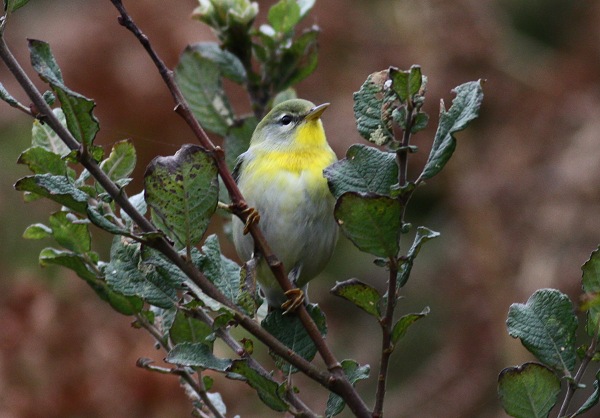
Jon Dunn
15 Oct 2014
Contributors websites
Check out our contributors website for more great photos and news
]



















